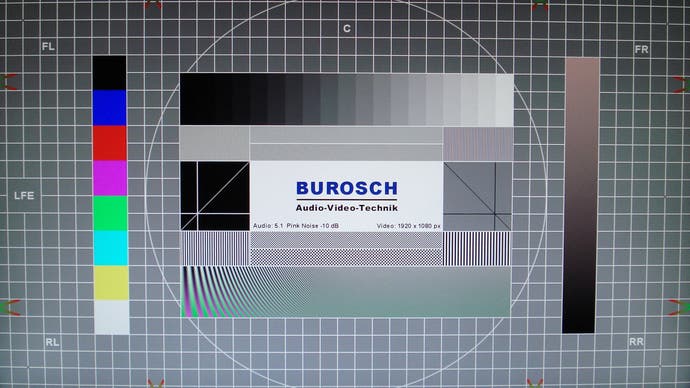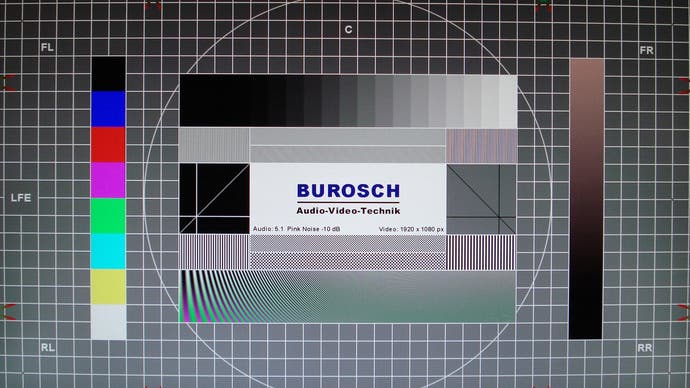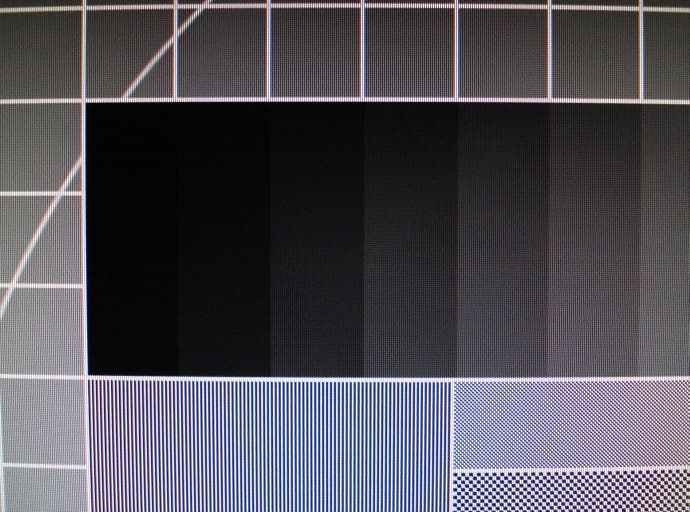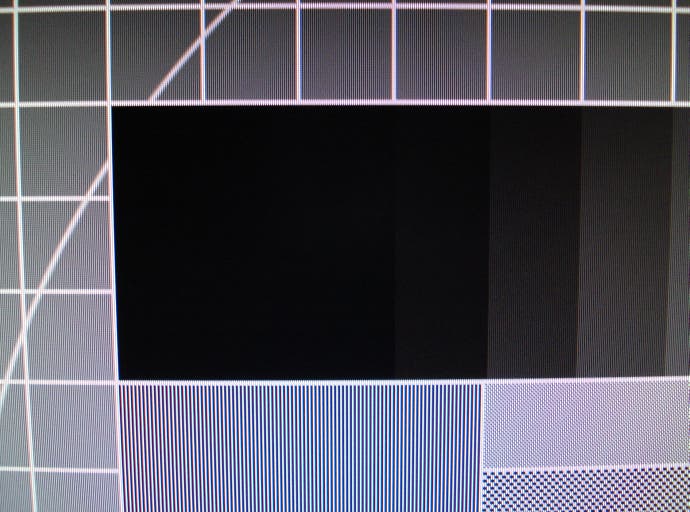Hardware Focus: Acer HN274H 3D Monitor
Meet the 27-inch screen that works with all 3D gaming formats.
Display and Performance
Looking at the listed specifications it is apparent that Acer has geared the HN274H primarily towards gaming and 3D viewing. In theory the use of a 5ms rated TN panel should lead to a low level of input lag, while the quick pixel refresh rate should minimise ghosting effects in fast motion scenes. The use of LED backlighting also allows for the display to pump out an insanely high level of brightness, making it well suited to combat the huge reduction in light output when using the 3D glasses.
Initial inspection of the screen when powered up reveals that panel uniformity could be better, with clouding (caused by backlight bleeding) being clearly visible in dark scenes and on the Windows desktop. The bottom of the screen appears brighter than the top, and this leads to the affected areas looking rather washed out. This is a commom problem on most displays which feature LED backlights, although severity of the issue varies from panel to panel. In this sense we feel that we were simply unlucky, considering early reports of generally excellent panel uniformity on other units.
Viewing angles were also pretty average, with shifts in brightness being visible when viewing the display off-axis. We found that vertical shifts were easier to spot, meaning that tilting the monitor for use up close increases visibility of the issue. However, things improved the further away you sit from the display, with there being slightly move give with regards to potential seating positions.
Despite being an incredibly bright monitor, the HN274H's contrast ratio came in at around 700:1, considerably less than the 800:1/850:1 ratios recorded on competing displays. It's also evident that Acer has made a choice here in sacrificing dynamic range in order to maximise the displays maximum brightness (due to having a low contrast ratio while driving a high level of brightness), thus impacting on both colour accuracy and upper-end white levels - details begin to get crushed long before the display can reach anywhere near its maximum brightness. Black levels are also impacted upon, with images lacking depth in dark scenes and blacks appearing as a shade of grey.
The question is whether or not these compromises have a largely negative effect on the overall image. Looking at how well the display performs after calibration and in both 2D and 3D modes, the answer isn't quite so clear-cut. In terms of colour balance and overall brightness the HN274H appears to have been primariy set-up for use in 3D - images are rendered with more depth and colours appear less over saturated - with 2D performance requiring a greater amount of tinkering to get an acceptable picture.


It's fair to say that the HN274H initially needs to some work to obtain decent picture quality out the box. Standard mode gives us images that look washed out with a strong blue tint to them and colours that are massively overblown. We also found that the display's gamma response was rather poor on our unit. Gamma tracking came in around 1.8 over DVI, leading to too much shadow detail being visible, while a 2.5 - 2.7 result was recorded when using RGB over HDMI, having the opposite effect: shadow details were nonexistent and the overall image appeared much too dark.
We found that the 'Movie' to be the best of the presets, giving us more natural looking images, though not free from colour bias. We used this as our starting point in properly setting up the monitor. Our aim here was to calibrate the display to the industry standards (ISF - Image Standards Foundation) for mastering high definition formats and Blu-ray movies to maximise picture quality - a colour temp of 6505k (D65) with the colour points mapped to Rec 709 specifications.
However, we did come across one snag which prevented us from doing this fully: while we could adjust the RGB values in the user menu, the controls for both greyscale and gamma (the hi and low RGB values, gain and offset) remained locked in the service menu for reasons unknown. This means that we could only affect the upper end of the greyscale and the gamma response in these areas. As a result, there are still some visible issues with regards to the displaying of shadow details on our unit, with things looking a touch too light, or way too dark - gamma tracking at 2.2 was only possible at the upper end of the greyscale.
That said, after our attempt at a full calibration the perceived contrast ratio and colour accuracy noticeably improved. Images appear sharper and subtle details are further brought out to the surface, to a point. However, we couldn't accurately map the colour points to meet the D65 and Rec 709 standards for mastering Blu-ray and HD content - there are no controls to do so on the HN274H with regards to the latter, but we did at least get a desirable 6500k colour temp.




This means that while there are still some colour errors visible to the human eye, they have less of a drastic impact than they did before. Although, we still noticed that flesh tones in a few movies we watched looked a little too discoloured, while other elements in various scenes - such as the sky and grass - appeared to be too rich and oversaturated.
In gaming terms, this discrepancy in colour reproduction isn't so much of an issue, as most developers rarely adhere to industry standards. And generally speaking, this means that any colour errors (except for the most extreme ones) will have less of a detrimental impact on overall picture quality. When trying out a range of titles, from Black Ops, Resident Evil 5, Gran Turismo and Killzone 3, we could notice that the games looked different compared to our Samsung C580 (calibrated to ISF standards), but at the same time, they didn't look visibly inaccurate in the same obvious way that films do on the HN274H. Calibration of the Acer display is worthwhile though, bringing out more fine details in high resolution textures, while greatly expanding the level of depth and perceived clarity on offer.
When it comes down to it, some might actually prefer the rich, vibrant images the Acer's TN panel renders in both 2D and 3D modes compared to the more reserved look of a fully calibrated display - it does have a certain pop to it. But those looking for something with a high level of colour accucary - primarily with the view of watching Bly-Ray material in addition to gaming - will be disappointed. This is one area where many HDTVs and monitors using IPS or SPVA panels have a distinct advantage, and one in which we feel that Acer should provide the user with at least, basic greyscale and proper colour management controls in the standard menu for those with the equipment to fully calibrate their display.